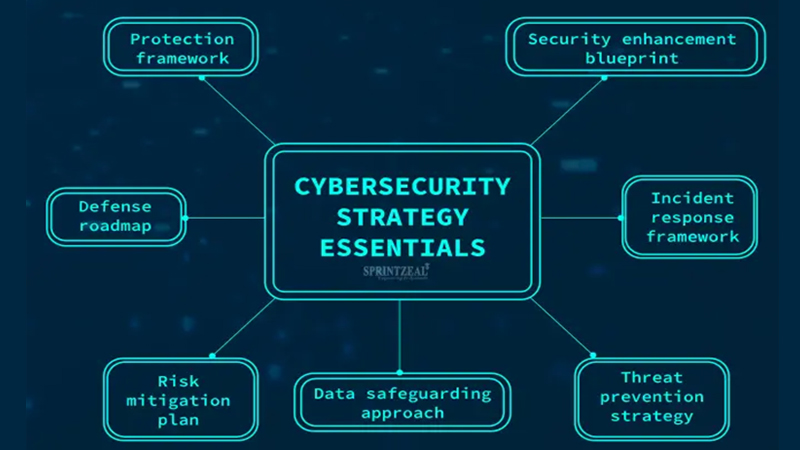The Importance of a Cybersecurity Plan:
Safeguarding Your Digital Assets

In today's interconnected world, cybersecurity is no longer just an IT concern; it's a fundamental aspect of running any business. With the rise of cyber threats-ranging from ransomware attacks to data breaches-a robust cybersecurity plan is essential for protecting sensitive information and ensuring business continuity.
Let's explore why a cybersecurity plan is crucial and what essential elements it should include.
Why a Cybersecurity Plan is Essential
1. Protecting Sensitive DataBusinesses handle vast amounts of sensitive information, including customer data, financial records, and intellectual property. A well-defined cybersecurity plan helps safeguard this information from unauthorized access and cyber threats.
2. Regulatory Compliance
Many industries are subject to regulations requiring specific security measures. A comprehensive cybersecurity plan ensures compliance with these laws, avoiding potential legal issues and financial penalties.
3. Business Continuity
Cyberattacks can disrupt operations, leading to significant downtime and financial loss. A cybersecurity plan includes response protocols to minimize the impact of incidents and ensures a quicker recovery.
4. Building Trust with Stakeholders
Customers, partners, and employees are more likely to trust a business that prioritizes cybersecurity. A solid cybersecurity strategy demonstrates a commitment to protecting data, which can enhance your reputation and customer loyalty.
5. Mitigating Financial Risk
The costs associated with a data breach can be staggering, including fines, legal fees, and loss of business. Investing in a cybersecurity plan is a proactive approach to mitigate these financial risks.
What to Include in a Cybersecurity Plan
1. Risk Assessment
Start by identifying potential threats and vulnerabilities. Conduct a thorough risk assessment to understand what assets need protection, the potential impact of various threats, and prioritize resources accordingly.
2. Security Policies
Develop comprehensive security policies that outline acceptable use, data handling procedures, and incident response protocols. Ensure that all employees are familiar with these policies and understand their importance.
3. Access Control
Implement strict access control measures to ensure that only authorized personnel have access to sensitive data. Use role-based access control (RBAC) to limit permissions based on job functions.
4. Incident Response Plan
Prepare an incident response plan detailing how to respond to a cybersecurity incident. This should include communication protocols, roles and responsibilities, and steps for containment and recovery.
5. Regular Training and Awareness Programs
Conduct regular training sessions to keep employees informed about cybersecurity best practices, social engineering tactics, and the importance of reporting suspicious activities.
6. Regular Software Updates and Patch Management
Ensure that all software, applications, and systems are regularly updated and patched to protect against known vulnerabilities. Automated patch management tools can help streamline this process.
7. Data Backup and Recovery
Establish a robust data backup strategy to ensure that critical information is regularly backed up and can be easily restored in the event of a cyber incident. Test the recovery process regularly to ensure its effectiveness.
8. Network Security Measures
Implement firewalls, intrusion detection systems, and encryption to protect your network and data in transit. Consider using a Virtual Private Network (VPN) for remote access to further enhance security.
9. Monitoring and Auditing
Regularly monitor network traffic and conduct security audits to identify and address vulnerabilities before they can be exploited. Continuous monitoring helps detect unusual activities in real-time.
10. Vendor and Third-Party Risk Management
Assess the security measures of third-party vendors who have access to your data. Ensure they adhere to your cybersecurity standards to minimize risks associated with external partners.






